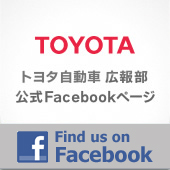Toyota Automobiles (トヨタ自動車)
Although many Japanese company names are written katakana (for emphasis), Toyota Motor Corporation actually has a cultural reason for doing so. In the late 1936, founder, Kiichiro Toyoda, was looking for a way to do away with the name 豊田 (Toyoda), which literally means "fertile rice paddies," and create a simpler logo design. The current name, トヨタ, was chosen because, though very similar to 豊田, it takes eight-- a luck number-- brush strokes to write and is easier on the eyes. I thought it was interesting that the use of katakana-- and such a major branding decision in the company's history-- was brought on, in part, by a superstition.
Source: トヨタ自動車 homepage and Wikipedia page
Cancer (ガン)
Another use for katakana is for scientific language. Although most science-related words are really just loan words nowadays, a few have kanji representations. A good example of this is cancer, which can be written as either 癌 or ガン. In most cases, however, one will find ガン written in hospitals, medical textbooks , and etc. because the it's thought to be easier to read and write. So katakana can also be used to replace kanji characters that are considered difficult to read.
Source: ミクロの侵入者、ワクチンに潜むガンウィルス―SV40と発ガンの謎 by 横山 逸男 and Wikipedia page on katakana
The Take-Home
There are many uses for katakana, some make intuitive sense (e.g. readability and loan words), while others require a bit more thought/research (e.g. contractions, some forms of emphasis, superstition). Introductory textbooks most likely differ in their explanations of katakana because, having so many uses for it, it is difficult to choose which instances are most relevant for beginners. I think textbooks like みんなの日本語 choose only to explain emphasis, sounds and loan words as possible uses for katakana because these are by far the most common occurrences.
 |
| You can like トヨタ自動車 on Facebook! |
Source: トヨタ自動車 homepage and Wikipedia page
Cancer (ガン)
 |
| Title of a scientific book using ガン |
Source: ミクロの侵入者、ワクチンに潜むガンウィルス―SV40と発ガンの謎 by 横山 逸男 and Wikipedia page on katakana
The Take-Home
There are many uses for katakana, some make intuitive sense (e.g. readability and loan words), while others require a bit more thought/research (e.g. contractions, some forms of emphasis, superstition). Introductory textbooks most likely differ in their explanations of katakana because, having so many uses for it, it is difficult to choose which instances are most relevant for beginners. I think textbooks like みんなの日本語 choose only to explain emphasis, sounds and loan words as possible uses for katakana because these are by far the most common occurrences.
Great analysis Carlos! As you mentioned, most of text books usually explain onomatopoeia, loan-word and emphasis.
返信削除The first analysis, Toyota, I did not know that トヨタ was chosen it because it takes eight, which is a luck number, brush strokes to write and is easier on the eyes. And I think Toyota uses トヨタ due to strategic plan to internationalize the company. I feel カタカナ is like middle between 漢字&ひらがな.
The second analysis, Cancer, I agree with your analysis. Furthermore, personally I think Japanese people use ガン instead of 癌 because it is difficult to write this 漢字. In order to instant understanding the meaning, we use ガン as カタカナ.- by こばやし